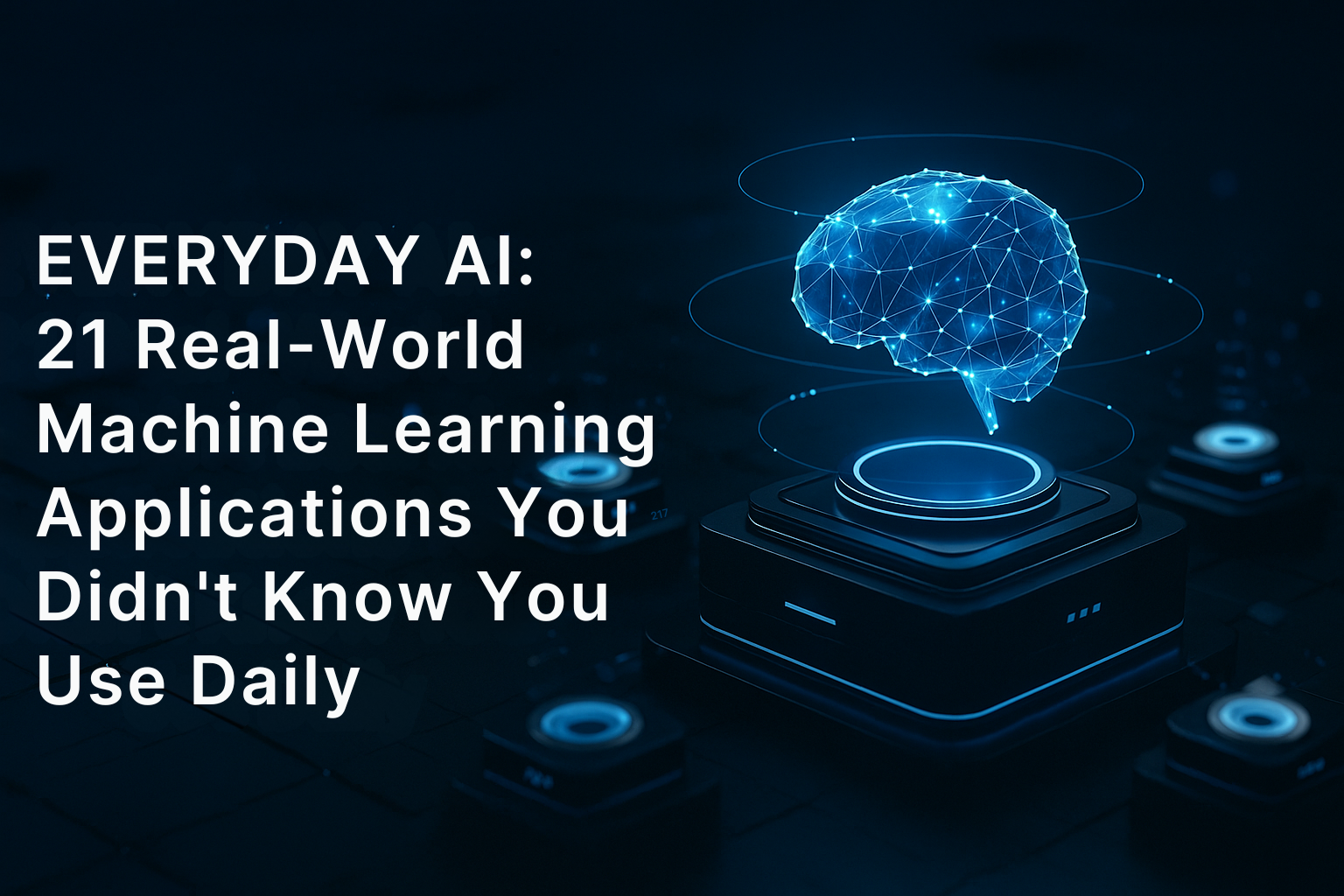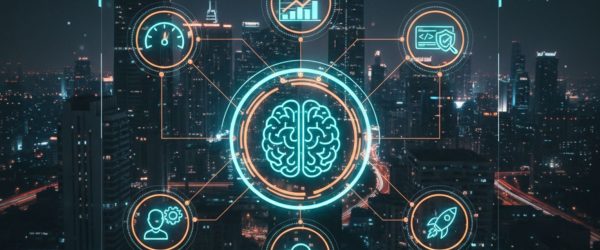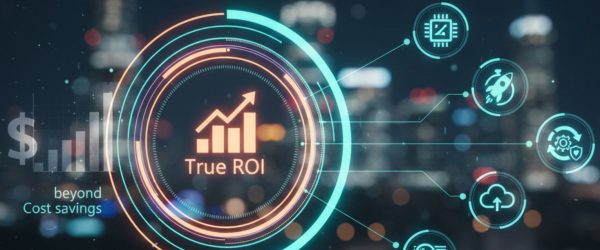Machine Learning (ML) isn’t just powering robots in sci-fi movies or sitting in the hands of elite data scientists—it’s woven into the fabric of our daily lives. From the apps on your phone to your online shopping experience, machine learning algorithms are silently working behind the scenes to make your life smoother, smarter, and more personalized.
In this article, we’re diving deep into 21 everyday examples of machine learning that most people use without even realizing it. We’ll explore how these technologies work, where you encounter them, and why they’re reshaping the way we live, work, and communicate.
1. Personalized Recommendations on Streaming Platforms
Ever wondered how Netflix seems to know exactly what you want to watch next? That’s machine learning at work. Algorithms analyze your watch history, pause times, skips, and ratings to serve up personalized movie and show suggestions.
🔍 Key ML Concepts Used: Collaborative filtering, content-based filtering, deep learning.
2. Spam Filters in Your Email
Your Gmail or Outlook inbox likely has filters that automatically divert spam and phishing attempts. These filters are powered by natural language processing and classification algorithms trained to recognize suspicious content patterns.
💡 Fun fact: Spam filters improve over time using supervised learning—by learning from your actions when you mark an email as spam or not.
3. Smart Assistants (Alexa, Siri, Google Assistant)
From setting reminders to controlling your smart home, AI voice assistants use machine learning and speech recognition models to understand voice commands, learn your preferences, and deliver context-aware responses.
📈 They also get smarter the more you use them, continually improving their ability to understand accents, intents, and new vocabulary.
4. Product Recommendations While Shopping Online
Ever browsed Amazon and found a “You might also like…” section that’s scarily accurate? That’s because eCommerce giants use machine learning models to analyze your search behavior, click-through rates, and purchase history.
🛍️ These systems are designed to maximize conversions and cart sizes through predictive analytics.
5. Google Maps and Traffic Predictions
ML helps Google Maps estimate travel times, detect traffic jams, and suggest alternate routes. It processes data from millions of mobile devices and learns patterns based on time of day, road type, and driver behavior.
🛣️ It’s not just map data—it’s real-time machine intelligence guiding your commute.
6. Social Media Feeds and Face Recognition
Your Instagram feed or TikTok “For You Page” isn’t random. Machine learning algorithms determine what you see based on your likes, shares, and viewing duration.
📸 Plus, Facebook’s face recognition feature (used for tagging photos) is another prime ML use case, relying on convolutional neural networks (CNNs) to match faces across billions of images.
7. Language Translation Tools
Services like Google Translate use ML-powered neural machine translation (NMT) to convert one language to another. These tools analyze context and sentence structure, making translations more natural and accurate over time.
🌍 The more they’re used, the better they get—thanks to feedback loops and continuous model training.
8. Virtual Keyboard Suggestions and Autocorrect
When your phone predicts what you’re about to type, that’s machine learning in action. These models learn from your typing habits, frequently used words, and corrections you’ve made in the past.
⌨️ Autocorrect? Same deal. It’s not just a dictionary—it’s a smart pattern recognizer learning as you type.
9. Online Fraud Detection
Banks and payment gateways use anomaly detection algorithms to flag unusual transactions. If you’ve ever gotten a fraud alert after a strange purchase, you’ve encountered ML detecting behavioral deviations in real-time.
🔒 It compares current transactions against historical data and identifies what looks out of the norm.
10. Customer Service Chatbots
Most modern customer support systems use AI-powered chatbots that learn from previous interactions. These bots understand user intent and provide instant replies without human intervention.
💬 Over time, they evolve into smarter, more accurate agents—thanks to reinforcement learning and feedback data.
11. Search Engine Optimization (SEO) and Ranking
Google’s search algorithm is constantly learning what users want. It uses RankBrain, an AI system that applies machine learning to understand user queries, especially vague or ambiguous ones.
🔍 The result? Smarter search rankings, tailored to your specific intent.
12. Fitness and Health Apps
Wearables like Fitbit, Apple Watch, and WHOOP use ML to monitor your heart rate, sleep quality, and activity levels. They learn your body patterns over time and adjust their insights to deliver personalized health advice.
🏃♂️ ML helps detect anomalies, predict potential health risks, and provide guided improvements.
13. Online Dating Apps
Swipe right on ML! Apps like Tinder or Bumble use machine learning to optimize match suggestions based on your swiping behavior, profile views, and preferences.
💘 The more you interact, the better it understands what (or who) you’re looking for.
14. Voice-to-Text Conversion
Whether using speech-to-text in WhatsApp or transcribing interviews, machine learning models process and transcribe voice data with impressive accuracy—adapting to different accents, speeds, and contexts.
🎙️ These tools get stronger over time, thanks to continuous voice dataset training.
15. Autonomous Vehicles and Driver Assistance
Self-driving cars like those from Tesla use a complex web of machine learning algorithms, sensors, and cameras to understand their surroundings, detect objects, and make decisions in real-time.
🚗 Even basic features like lane assist and adaptive cruise control rely on ML models.
16. Online Education and Smart Tutoring
EdTech platforms like Khan Academy, Coursera, or Duolingo use ML to adapt lessons based on your performance. They personalize learning paths, recommend materials, and flag areas where you struggle.
🎓 It’s like having a personal tutor who learns with you.
17. Dynamic Pricing in Travel and E-Commerce
Ever noticed flight prices changing constantly? That’s dynamic pricing powered by ML. Airlines and eCommerce sites analyze demand, competitor pricing, and user behavior to optimize prices in real-time.
✈️ The goal: maximize profit while staying competitive.
18. Photo Organization and Smart Albums
Apps like Google Photos automatically categorize your photos by location, object type, or person. This is made possible through image recognition and classification algorithms.
📷 Want to see every photo with your dog? Just search “dog”—machine learning handles the rest.
19. Banking Apps and Credit Scoring
ML models evaluate your creditworthiness by analyzing your transaction history, income, repayment patterns, and even social behavior.
🏦 It goes beyond a credit score—it’s personalized financial insights based on predictive analysis.
20. Predictive Text in Coding (e.g., GitHub Copilot)
Developers benefit from ML tools like GitHub Copilot or IntelliCode, which suggest code completions and even entire functions based on your programming patterns.
👨💻 These models are trained on billions of lines of code, making development faster and smarter.
21. Music Discovery on Spotify and YouTube Music
Spotify’s Discover Weekly? Pure ML magic. The app uses user behavior, audio analysis, and collaborative filtering to recommend new music tailored to your taste.
🎧 It’s not just your history—it also looks at what people with similar tastes enjoy.
Conclusion: Machine Learning Is Everywhere—And It’s Just Getting Started
From your morning alarm to your late-night Netflix binge, machine learning is silently transforming your everyday experience. It’s optimizing, predicting, personalizing, and protecting—often without you even realizing it.
And this is just the beginning.
As more devices become connected and more data is gathered, machine learning will continue to evolve, becoming more intuitive and integrated into our daily routines.
So next time you’re amazed by how your phone seems to “know” what you want—remember, that’s the power of machine learning, quietly making life better, one smart prediction at a time.







